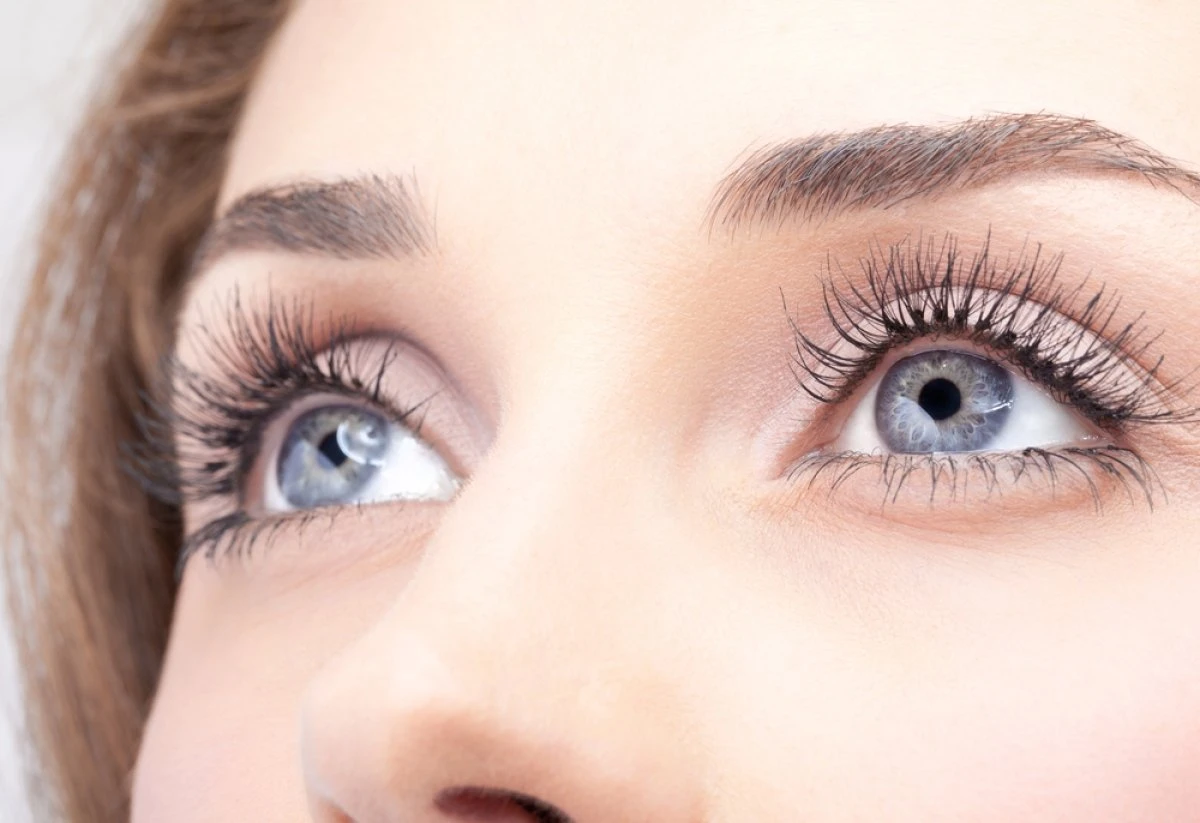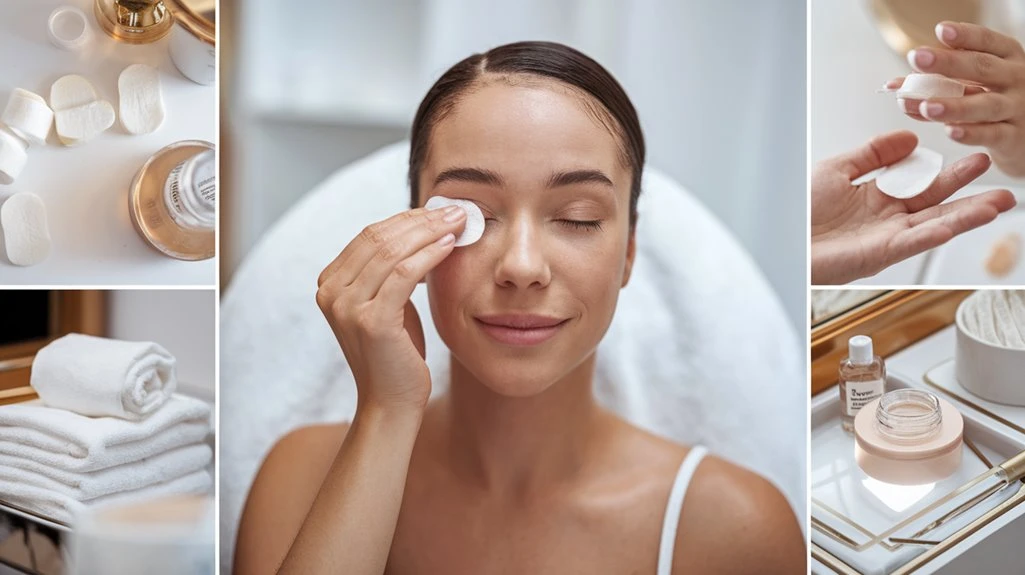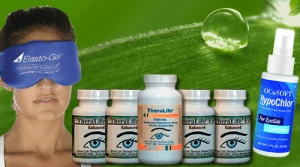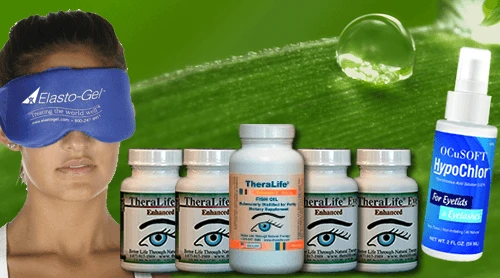For optimal management of blepharitis, incorporating TheraLife’s products into your routine can significantly benefit your eye health. Start by using TheraLife’s all-natural eye health supplements, designed to reduce inflammation and promote tear production, providing relief from irritation and dryness. Their comprehensive product line also includes gentle, preservative-free lid cleansers that are ideal for daily eyelid washing. Warm compresses, available through TheraLife, can also help soothe irritation, though individual results may vary. Practicing proper hand hygiene is crucial to reduce bacterial contamination, and TheraLife’s educational resources offer detailed guidance on maintaining cleanliness. During flare-ups, avoid eye makeup and potential irritants, and consult TheraLife for specific product recommendations tailored to support your unique ocular surface health. Discover more about TheraLife’s evidence-based strategies and how they can enhance your blepharitis management today.
Best Blepharitis Treatment From TheraLife- When Drops Don’t Work.
Key Takeaways
- Clean your eyelids daily using a gentle, preservative-free lid cleanser or a diluted baby shampoo solution.
- Apply warm compresses followed by gentle eyelid massage once or twice daily to help loosen debris and secretions.
- Wash your hands thoroughly with soap and water before touching your eyes or performing any eyelid care.
- Avoid eye makeup, fragranced skincare, and harsh cleansers, especially during blepharitis flare-ups.
- Use a clean cotton pad or gauze for eyelid cleansing to minimize irritation and remove debris effectively.
Wash Your Eyelids Daily With Warm Water
Despite popular belief, cleansing your eyelids with only warm water isn’t sufficient for managing blepharitis. However, incorporating warm water into your daily routine still plays an important supportive role.
When you apply a clean, warm compress to your closed eyelids, you help to liquefy meibomian gland secretions and dislodge crusts along the lid margin. Pairing the warm compress with gentle eyelid massage can further facilitate secretion clearance, reducing inflammation and discomfort.
It’s essential to perform this process consistently, typically once or twice a day, to optimize results. Although warm water alone doesn’t address all underlying causes of blepharitis, these adjunct techniques improve symptom control and support overall eyelid hygiene.
Always exercise caution to avoid excessive pressure during eyelid massage to prevent irritation or injury. Consistent eyelid hygiene practices are crucial to minimize symptom recurrence and maintain eye health.
Use a Gentle Lid Cleanser or Homemade Solution
Proper cleansing is foundational in managing blepharitis, and using a gentle lid cleanser or specially formulated homemade solution effectively removes debris, bacteria, and excess oils from the eyelid margins. You should avoid harsh soaps and instead opt for non-irritating, preservative-free commercial gentle cleansers specifically designed for eyelid hygiene. These products maintain the delicate periocular skin barrier and reduce inflammation risk. Alternatively, you can prepare homemade solutions, such as a diluted mixture of baby shampoo and sterile water or a saline solution, to gently emulsify and lift debris without damaging the meibomian glands. Apply your chosen solution with a clean cotton pad or gauze, gently massaging the lid margins to break up biofilm and microbial colonization. Consistent eyelid hygiene is crucial for managing blepharitis symptoms effectively. Guarantee thorough yet gentle application daily for best results.
Apply Warm Compresses to Soothe Irritation
Although warm compresses are commonly recommended for symptomatic relief in blepharitis, current evidence doesn’t support their efficacy in soothing irritation or improving clinical outcomes.
You may encounter advice endorsing warm compresses as a natural remedy, purportedly aiding moisture retention and loosening debris along the eyelid margin. However, high-quality clinical studies consistently show negligible improvement in meibomian gland function, ocular surface stability, or subjective comfort for those using this method.
The mechanism of action, theoretically based on the liquefaction of meibum and enhanced gland expression, lacks substantiated therapeutic benefit in controlled trials.
For optimal results in managing blepharitis, consider combining hot compresses with the use of Avenova eyelid cleanser, which is recommended alongside other treatments like TheraLife Eye Enhanced.
When considering natural remedies for blepharitis, it’s crucial to critically evaluate evidence, since nonpharmacological interventions like warm compresses may not deliver the anticipated clinical results.
Evidence-based practices should always guide your eyelid hygiene routine.
Practice Good Hand Hygiene Before Touching Eyes
Before you touch your eyes or eyelids, always wash your hands thoroughly with soap and water to reduce the risk of introducing bacteria or other pathogens that could exacerbate blepharitis.
Effective hand hygiene is essential in bacteria prevention, as your hands often harbor microorganisms capable of precipitating or worsening eye infections.
Use proper technique: scrub all hand surfaces—palms, backs, between fingers, and under nails—for at least 20 seconds, then rinse and dry with a clean towel.
Even brief contact with contaminated hands can transfer pathogens to the periocular area, undermining your eyelid hygiene efforts.
By establishing this routine, you help prevent cross-contamination and minimize the risk of bacterial proliferation along your lid margins.
Consistent hand washing before eye care is a foundational step in blepharitis management. Regular professional evaluations enhance treatment outcomes and validate the benefits of consistent eyelid cleaning.
Best Blepharitis Treatment From TheraLife- When Drops Don’t Work.
Avoid Eye Makeup and Irritants During Flare-Ups
When experiencing a blepharitis flare-up, you should discontinue the use of eye makeup and avoid potential irritants such as fragranced skincare products or harsh cleansers. Application of cosmetics to inflamed eyelids can exacerbate symptoms due to increased skin sensitivity and compromised barrier function. Particles from mascara, eyeliner, or eyeshadow may accumulate along the lid margin, fostering microbial growth and obstructing meibomian glands. For ideal eye care, refrain from using products containing alcohol, fragrance, or preservatives, as these agents heighten irritation. If you must cleanse your face, choose hypoallergenic, ophthalmologist-approved products that are gentle on periorbital skin. Prioritizing skin sensitivity during flare-ups helps reduce the risk of aggravation, promotes symptom resolution, and supports long-term ocular surface health for individuals managing chronic blepharitis. Good hygiene practices are essential in managing blepharitis, helping to reduce its occurrence and alleviate symptoms.
Frequently Asked Questions
Can Diet or Nutrition Affect Blepharitis Symptoms?
You can influence blepharitis symptoms through dietary changes and nutritional supplements.
Evidence shows that omega-3 fatty acids, found in foods or supplements, help stabilize the tear film and reduce eyelid inflammation. Antioxidants like vitamins A, C, and E may also support ocular surface health.
While diet alone won’t cure blepharitis, optimizing your nutrition can complement traditional therapies and potentially decrease symptom severity, especially if you work with your healthcare provider.
Is Blepharitis Contagious to Others?
Think of blepharitis as a stubborn guest camping on your eyelids; it doesn’t easily pack up and move to others.
Blepharitis transmission between people is uncommon, since it’s usually caused by chronic inflammation rather than contagious pathogens.
Still, you should prioritize strict hygiene practices—such as not sharing towels or cosmetics—to limit rare bacterial spread.
Maintaining these routines helps safeguard both your eye health and those around you from secondary infections.
Are There Long-Term Complications if Blepharitis Is Untreated?
If you leave blepharitis untreated, you may develop long-term complications, such as chronic inflammation of the eyelid margins.
This persistent irritation can cause eyelid scarring and thickening, affecting your eyelash growth and making your eyes more susceptible to infection.
You could also experience recurrent styes, dryness, and even damage to your corneal surface.
Addressing blepharitis early helps prevent these sequelae and preserves your ocular surface health.
What Role Do Allergies Play in Blepharitis?
Imagine your eyelids under siege: that’s how allergy symptoms can trigger blepharitis. When you’re exposed to allergens, your immune response may cause inflammation along the eyelid margin.
This immune-mediated reaction increases redness, swelling, and irritation, worsening blepharitis symptoms. Allergies can also lead to excessive tearing and itching, encouraging you to rub your eyes, which disrupts the delicate eyelid structure and meibomian glands, further impairing tear film stability and contributing to chronic eyelid inflammation.
Can Contact Lens Wear Make Blepharitis Worse?
If you wear contact lenses, you can exacerbate blepharitis, especially if your contact lens hygiene isn’t ideal.
Poor hygiene may increase bacterial growth on the lenses and eyelids, worsening inflammation. The lenses can also trap debris and bacteria against the ocular surface, aggravating symptoms.
Always practice meticulous contact lens hygiene by disinfecting lenses regularly, replacing them as recommended, and ensuring proper storage to minimize the risk of secondary infection and worsening blepharitis.
Best Blepharitis Treatment From TheraLife- When Drops Don’t Work.
Conclusion
To effectively manage blepharitis and maintain optimal eye health, integrating eyelid hygiene into your daily routine is crucial. TheraLife’s products offer exceptional benefits to help you achieve this. Using their specialized cleansers and warm compress solutions can significantly reduce inflammation and discomfort. Their holistic approach, which includes supplements that support overall eye health, ensures that your eyelids remain calm and minimizes recurrence. Additionally, TheraLife’s natural remedies provide gentle yet effective care, allowing you to avoid harsh chemicals that can exacerbate the condition. Embracing these strategies, alongside avoiding eye makeup during flare-ups, will help you maintain the healthiest eyes possible and continue to live comfortably, even in environments that challenge those with dry eyes.





